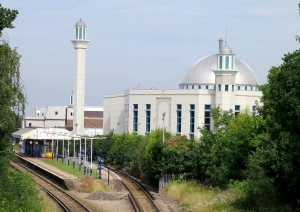I cannot write about the devastating day which led to the events that follow.
Jackie and I, sadly, parted in September 1972, and, for the first time, I left SW19/20 for East London, where I spent a month with Tony and Madeleine, at whose wedding in 1970 ‘The Bridesmaid’ photograph was taken. I will never forget seeing, when bereft, and carrying a suitcase, I turned into Lolesworth Buildings, Thrawl Street, Whitechapel, Madeleine standing on their top floor balcony beating a carpet hanging over the railings in the bright sunshine that caught the flying dust. Tony tells me this building, c.1880, was demolished in 1979.
Thrawl Street stands off Brick Lane which, since the 18th Century, has received successive groups of immigrants. The French Huguenots fled to this part of London in the 1700s. Irish people and then Ashkenazi Jews followed in the 19th Century. In the later 20th century, Bangladeshi Bengalis from Sylhet comprised the major group of immigrants and gradually predominated in the area. Many Bengali immigrants to Brick Lane were from the Greater Sylhet region of what became Bangladesh.
During the month I lived there I ate almost daily at one of the two or three Bangladeshi men’s cafés. There was just one set meal of a curry and chapattis with a saucer of raw chillis on the side. The price was £1 and it is where I developed my taste for hot chilli. Opposite my favourite of these establishments stood the Brick Lane synagogue, which had begun life in 1743 as a Huguenot church. The building was acquired by the Jewish immigrant community in 1898 and, because of the decline in numbers on account of their moving to other parts of London, closed in 1973, the year after I was there. In 1975 it was sold again, to become a mosque.
Now known as Banglatown, Brick Lane and streets off it are packed with top class Bangladeshi restaurants. When I visited there with Sam and Holly in the early part of this century, we dived into any nearby one simply to avoid scouts sent by other restaurants to seek our custom.
Monica Ali’s excellent novel, Brick Lane, is based on a family of immigrants from the country of her birth, now living in London’s East End.
Before I knew him, Geoff Le Pard posted https://geofflepard.com/2014/06/30/upcycling-buildings-if-only-it-was-as-easy-with-people/ which covers this history in greater depth, and with more photographs. He has added this link to his comment on my post.







